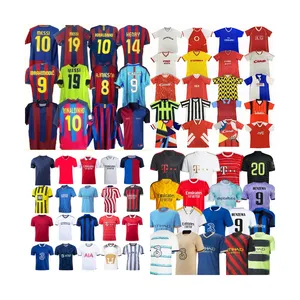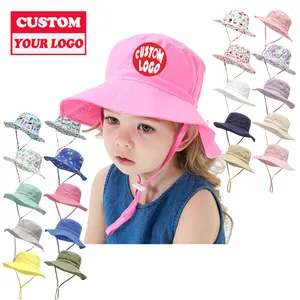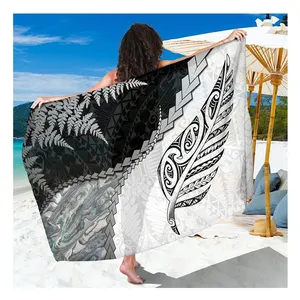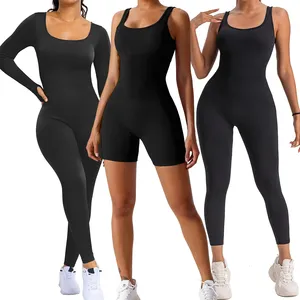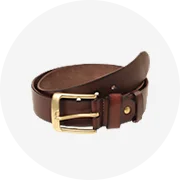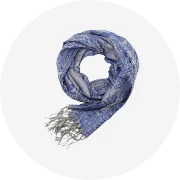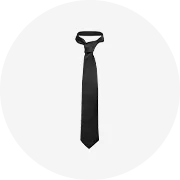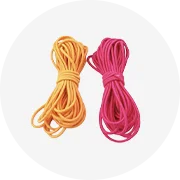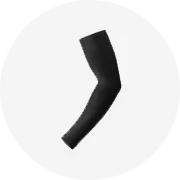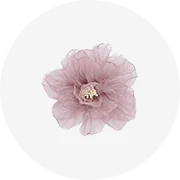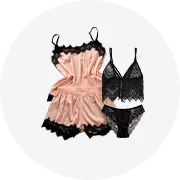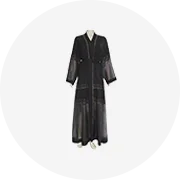Populer di industri Anda






Suyzeko lampu PDT inframerah, alat terapi cahaya merah frekuensi dapat disesuaikan dekat inframerah 660nm 850nm
Rp 572.824 - Rp 654.656
Minimal Pesanan: 500 Buah







Diskon Besar-besaran 2023 Selimut Sauna Inframerah Jauh Terapi Cahaya Merah dengan Pilihan Tas untuk Menurunkan Berat Badan dan Detoksifikasi Ke Denmark
Rp 1.571.174 - Rp 1.783.937
Minimal Pesanan: 1 Unit



Topi terapi lampu merah panjang gelombang tertinggi 650nm topi penumbuh rambut Laser pertumbuhan rambut topi inframerah untuk penggunaan rumah perawatan rambut
Rp 4.909.916 - Rp 5.728.236
Minimal Pesanan: 1 Unit







Plus inframerah seluruh tubuh pro, dengan terapi lampu merah redol pro terapi lampu merah 810nm untuk penggunaan di rumah

Rp 651.383 - Rp 1.080.182
Minimal Pesanan: 1 Buah







Selimut Terapi Lampu Merah untuk Menurunkan Berat Badan, Karpet Detoks Bantalan Sauna Inframerah
Rp 1.571.174 - Rp 1.783.937
Minimal Pesanan: 1 Set







Penjualan terlaris Top SAIDI 660nm 850nm merah dekat lampu Led inframerah mesin terapi Harga terbaik PDT Led Cahaya terapi
Siap Kirim
Rp 4.630.051 - Rp 4.826.448
Minimal Pesanan: 1 Buah
Pengiriman per potong: Rp 991.803






Beauty spa, terapi 7 warna Led PDT perawatan seluruh tubuh Anti Penuaan peremajaan kulit
Siap Kirim
Rp 62.175.901 - Rp 65.449.178
Minimal Pesanan: 1 Set
Pengiriman per potong: Rp 26.169.852






Kinreen sepatu terapi lampu rumah, sepatu terapi cahaya merah terbaik untuk kaki varises, bisa dipakai ukuran Gratis
Rp 1.422.239 - Rp 1.700.468
Minimal Pesanan: 1 Buah






Mesin Lampu Masker Wajah Led 7 Warna Terapi, Perangkat Kecantikan Perawatan Kulit Harga Terbaik
Siap Kirim
Rp 1.194.747 - Rp 1.423.876
Minimal Pesanan: 1 Buah






Lampu terapi cahaya merah RL120maxpt, 150 buah 750w peralatan fisik penghilang rasa sakit 660nm 850nm lampu merah terbaik penggunaan rumah
Siap Kirim
Rp 3.125.980 - Rp 3.289.644
Minimal Pesanan: 1 Buah
Pengiriman per potong: Rp 1.660.043





Penjualan Laris Lampu LED Inframerah Merah 660Nm 850Nm Dapat Dipakai Terbaik Terapi Menipu Pad Terapi Dapat Diregangkan Portabel dengan Timer
Siap Kirim
Rp 490.992 - Rp 818.320
Minimal Pesanan: 1 Buah
Pengiriman per potong: Rp 377.082


Penjualan Terbaik terapi lampu merah untuk kecantikan mata perangkat perawatan mata anti-penuaan mengurangi lingkaran mata hitam

Rp 621.923 - Rp 736.488
Minimal Pesanan: 500 Unit
Pencarian Terkait:
mesin terapi cahaya berdenyutterapi cahaya yang anti penuaanterapi cahaya eksimterapi wajah yang dipimpinterapi ringanmemimpin terapi cahaya inframerahterapi cahaya inframerahadalah terapi cahayamenghidupkan terapi cahayaterapi cahaya portabelterapi cahaya yang murahterapi cahaya ionterapi cahaya yang dipimpinmembeli terapi cahaya merahterapi cahaya lampu






Penjualan Terbaik Laser Medis Kelas Medis Terapi Lampu Merah untuk Penggunaan Di Rumah
Rp 2.438.592 - Rp 5.384.541
Minimal Pesanan: 2 Set






Redvitalitas 2023 lampu inframerah LED 850nm, lampu terapi 300W untuk meningkatkan proses pemulihan seluruh tubuh
Rp 1.276.579 - Rp 1.440.242
Minimal Pesanan: 1 Buah






Lampu Terapi Cahaya Merah Infra Rumah Terbaik Tubuh Penuh 630nm 660nm 830nm 850nm Led Terapi Cahaya Merah untuk Pemulihan Otot
Siap Kirim
Rp 7.201.210 - Rp 9.639.802
Minimal Pesanan: 1 Buah
Pengiriman per potong: Rp 2.366.907






Harga Terbaik Panel terapi lampu merah 1500W 630nm 660nm 810nm 850nm terapi lampu merah grosir di Cina
Rp 965.617 - Rp 6.530.189
Minimal Pesanan: 1 Buah






Terbaik logo pribadi kustom 7 warna lampu led terapi wajah untuk penggunaan rumah wajah dan leher perawatan jerawat pemutih 2 ulasan
Rp 229.130 - Rp 310.962
Minimal Pesanan: 1 Buah






Tongkat perawatan kulit, tongkat terapi lampu merah terbaik, tongkat kulit EMS, tongkat terapi kulit pembaruan kecantikan
Rp 310.798 - Rp 343.531
Minimal Pesanan: 2 Buah






Beauty spa, terapi 7 warna Led PDT perawatan seluruh tubuh Anti Penuaan peremajaan kulit

Rp 8.657.819 - Rp 9.312.474
Minimal Pesanan: 1 Set





Produk penjualan terbaik 2022 panel terapi lampu merah 660nm 850nm lampu merah panel terapi cob terapi cahaya led kuat
Rp 1.849.402 - Rp 5.269.977
Minimal Pesanan: 5 Buah






Peralatan Perawatan Kulit Led Terbaik untuk Kecantikan Terapi Cahaya Led
Siap Kirim
Rp 9.001.513 - Rp 9.819.832
Minimal Pesanan: 1 Set
Pengiriman per potong: Rp 839.105






Panel lampu inframerah, peralatan penghilang rasa sakit seluruh tubuh, panel lampu terapi merah untuk penggunaan rumah, peralatan kecantikan sinar merah terapi
Rp 6.333.792 - Rp 6.497.456
Minimal Pesanan: 1 Buah






Produk terbaik terapi lampu Led pdt 470nm 630nm 850nm untuk terapi kecantikan wanita Led
Siap Kirim
Rp 1.292.945 - Rp 1.587.540
Minimal Pesanan: 1 Buah
Pengiriman per potong: Rp 418.162






Produk Terbaik Terapi Lampu Led Pdt Pengangkat Wajah untuk Wanita, Terapi Led Kecantikan
Rp 1.996.700 - Rp 2.487.691
Minimal Pesanan: 1 Unit






CE Beauty spa medis, lampu terapi 7 warna Led PDT untuk peremajaan kulit Anti Penuaan

Rp 57.282.351 - Rp 105.563.190
Minimal Pesanan: 1 Set






Penggunaan di rumah peralatan kecantikan panel terapi lampu merah seluruh tubuh terbaik untuk menghilangkan rasa sakit LED terapi lampu inframerah untuk wajah
Rp 6.530.189 - Rp 7.512.172
Minimal Pesanan: 2 Buah






Lampu kontur terapi lampu merah terbaik, mesin penghilang nyeri dan penurunan lemak badan penuh 940nm
Siap Kirim
Rp 29.443.129 - Rp 34.353.045
Minimal Pesanan: 1 Buah
Pengiriman per potong: Rp 6.595.654






Led terapi cahaya merah genggam terbaik, untuk penggunaan di rumah, perangkat peremajaan kerutan wajah
Rp 212.764 - Rp 261.863
Minimal Pesanan: 1 Buah






Sabuk terapi lampu merah Led 105, 660nm 850nm terlaris bungkus rumah penggunaan terapi lampu inframerah untuk mengurangi rasa sakit
Rp 342.058 - Rp 374.791
Minimal Pesanan: 200 Buah






Penjualan Terbaik terapi lampu merah Perawatan Kulit lampu merah tongkat isi ulang terapi cahaya merah untuk wajah untuk penggunaan rumah

Rp 490.992 - Rp 736.488
Minimal Pesanan: 2 Buah






Perawatan Kulit Wajah Korea, Mesin Pdt Terapi Cahaya Led Produk Terlaris 2020 Di Eropa/
Rp 1.014.716 - Rp 1.255.302
Minimal Pesanan: 1 Buah






Produk penjualan terbaik 2023 terapi inframerah cahaya 660nm 850nm panel terapi inframerah portabel
Siap Kirim
Rp 1.063.816 - Rp 1.292.945
Minimal Pesanan: 1 Set
Pengiriman per potong: Rp 736.488






Paling Laris 2023 Terapi Lampu Merah Terapi Pelangsing Bungkus Sauna untuk Menurunkan Berat Badan dan Menghilangkan Rasa Sakit
Siap Kirim
Rp 621.923 - Rp 654.656
Minimal Pesanan: 1 Set
Pengiriman per potong: Rp 776.422






Sabuk terapi lampu merah dengan inframerah, sabuk terapi lampu merah 660Nm 850Nm, penjualan terbaik
Siap Kirim
Rp 849.416 - Rp 980.347
Minimal Pesanan: 1 Set
Pengiriman per potong: Rp 572.824






Produk terbaik terapi lampu Led pdt untuk wanita terapi Led kecantikan
Rp 654.656 - Rp 981.984
Minimal Pesanan: 2 Buah
- 10%






Sabuk terapi lampu merah Led 84W, sabuk terapi lampu merah Led terapi pelangsing 660nm 850nm hasil terbaik 420
Siap Kirim
Rp 854.326 - Rp 1.001.623
Minimal Pesanan: 1 Buah
Pengiriman per potong: Rp 324.710






Penjualan Terbaik 2023 PDT Led lampu merah terapi 640nm lampu merah terapi untuk mesin tubuh
Siap Kirim
Rp 8.166.827 - Rp 9.001.513
Minimal Pesanan: 1 Unit
Pengiriman per potong: Rp 3.434.323






Best seller mesin galvanic peralatan kecantikan terapi cahaya foton
Rp 106.382 - Rp 130.932
Minimal Pesanan: 10 Buah






Penjualan Terbaik terapi lampu merah LED dekat lampu merah inframerah sabuk terapi untuk penutup tubuh dapat dipakai bantalan terapi cahaya
Rp 653.019 - Rp 816.683
Minimal Pesanan: 50 Set






Beauty spa, terapi 7 warna Led PDT perawatan seluruh tubuh Anti Penuaan peremajaan kulit Siap Kirim
Siap Kirim
 Siap Kirim
Siap KirimRp 8.166.827 - Rp 14.713.382
Minimal Pesanan: 1 Set
Pengiriman per potong: Rp 8.674.185
Kategori terbaik
Tentang terapi cahaya terbaik
Alibaba.com menawarkan 4199 produk terapi cahaya terbaik. Berbagai macam pilihan terapi cahaya terbaik tersedia untuk Anda, seperti mengencangkan kulit, peremajaan kulit, dan penghapusan tato. Anda juga dapat memilih dari cn, kami, dan uni eropa terapi cahaya terbaik. Juga dari abs, stainless steel, dan plastik terapi cahaya terbaik.Dan apakah terapi cahaya terbaik tersebut kaki/lengan, leher/tenggorokan, atau ketiak.
